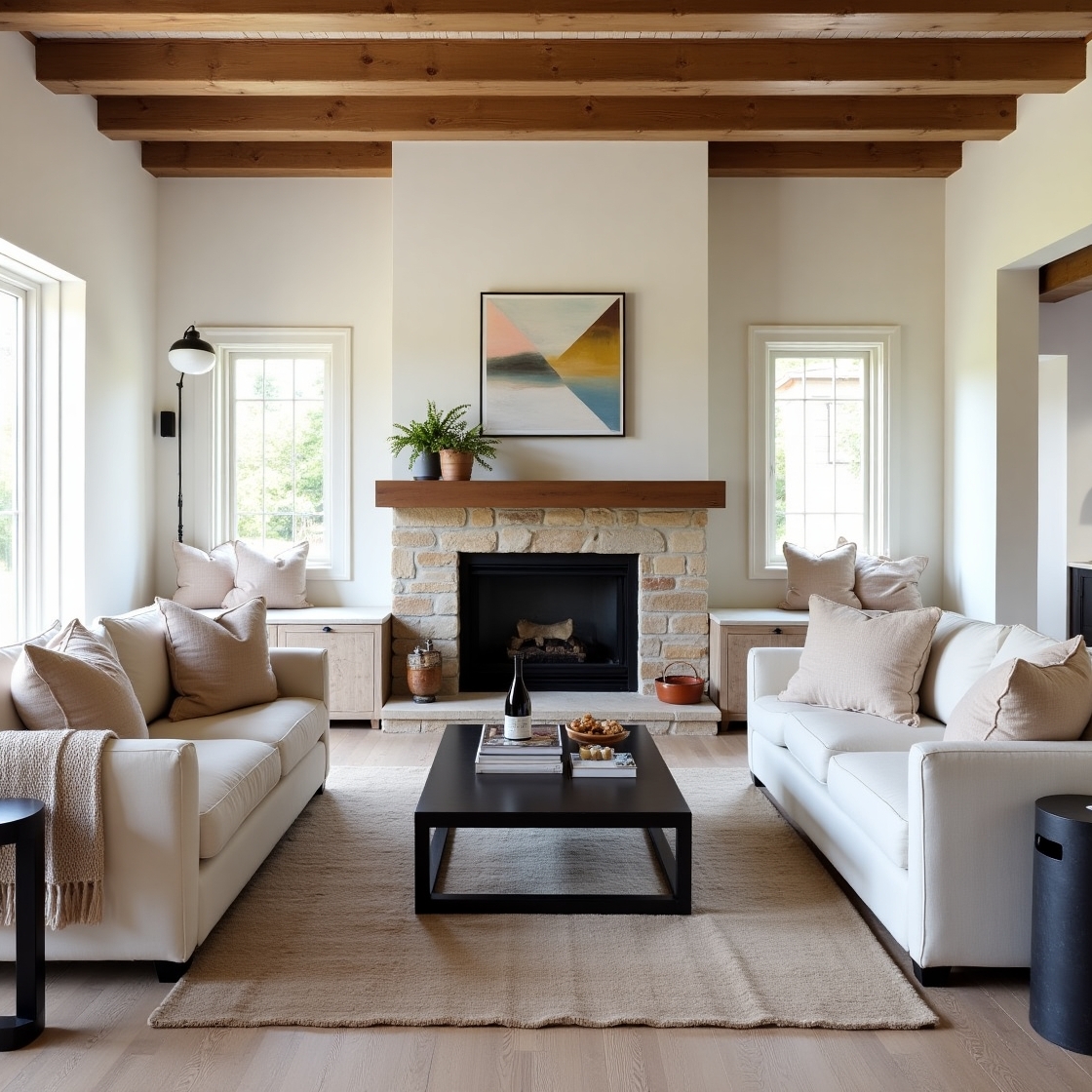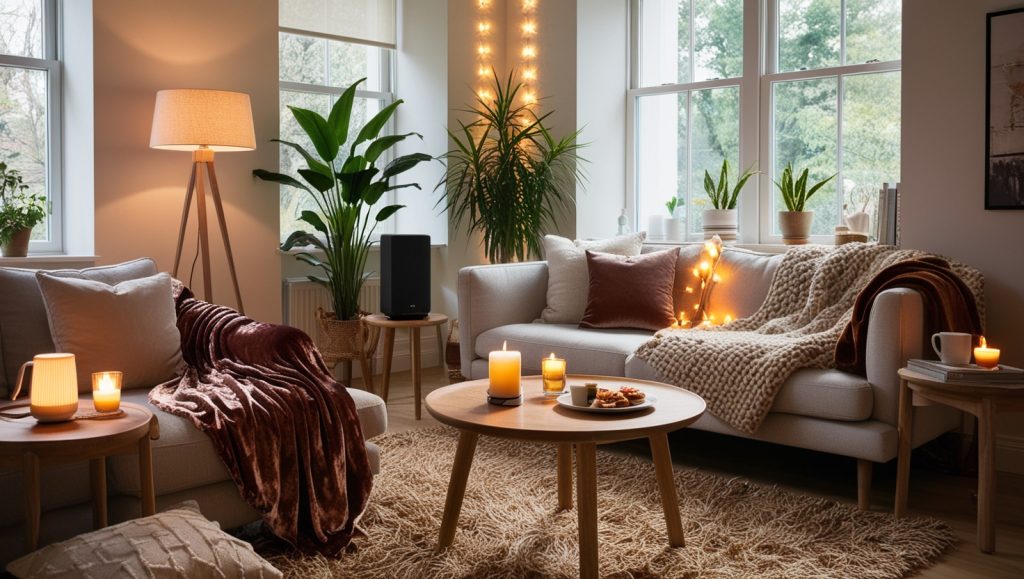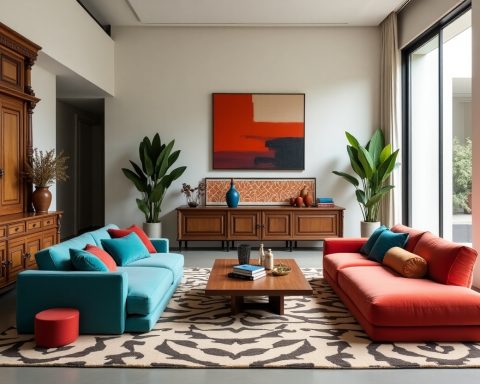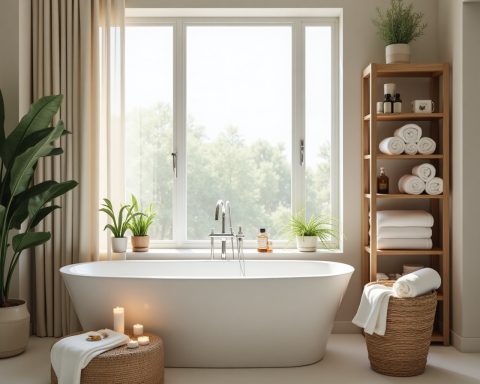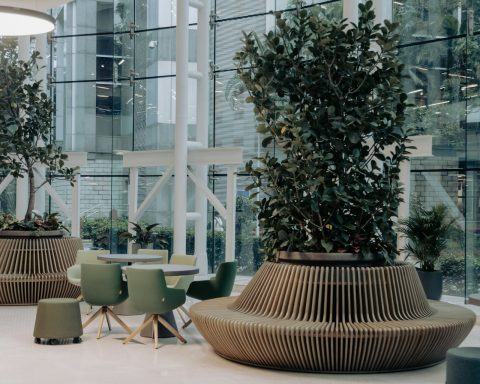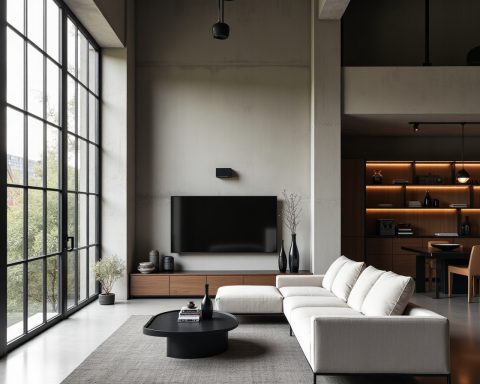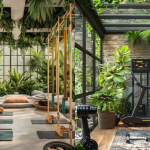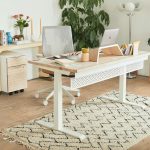Living in a small apartment doesn’t mean sacrificing style or functionality. In fact, clever design and thoughtful choices can transform a compact space into a chic and efficient haven. The key is to maximize every square inch, embrace smart storage solutions, and curate a design that reflects your personal taste without overwhelming the limited area. This guide will walk you through essential strategies to create a small apartment that feels both spacious and stylish.
1. Embrace Verticality: Look Up to Maximize Space
Don’t just focus on the floor space; utilize the often-untapped potential of your walls.
- Tall Shelving Units: Opt for floor-to-ceiling shelving to provide ample storage for books, décor, and even clothing. Choose open shelving to maintain a sense of airiness or closed cabinets for a cleaner look.
- Wall-Mounted Storage: Install shelves, cabinets, and even desks that are mounted to the wall. This frees up valuable floor space and creates a less cluttered feel.
- Hanging Organizers: Utilize wall-mounted organizers in entryways, kitchens, and even bathrooms to keep essentials within reach without taking up surface area.
- Curtain Rods High Up: Hang curtains as close to the ceiling as possible to visually elongate the walls and make the room feel taller.
2. Multifunctional Furniture: The Smartest Investment
Pieces that serve more than one purpose are your best friends in a small apartment.
- Sofa Beds: A stylish sofa that easily converts into a comfortable bed is essential for accommodating guests without needing a dedicated guest room.
- Storage Ottomans: These provide seating and a hidden compartment for blankets, pillows, or other items.
- Coffee Tables with Storage: Choose coffee tables with drawers, shelves, or lift-up tops to stow away remotes, magazines, or even laptops.
- Folding or Nesting Furniture: Consider folding chairs, tables, or nesting stools that can be easily stored away when not in use, freeing up valuable floor space.
- Bench Seating with Storage: In dining areas or entryways, benches with built-in storage offer seating and a place to keep shoes or other items.
3. Light and Bright: Creating an Illusion of Spaciousness
Strategic use of light can make a small apartment feel significantly larger and more inviting.
- Maximize Natural Light: Keep window treatments light and airy to allow as much natural light as possible to flow into the space. Use sheer curtains or blinds that can be adjusted for privacy.
- Layered Lighting: Combine ambient lighting (general room illumination), task lighting (for specific activities like reading or cooking), and accent lighting (to highlight décor) to add depth and dimension.
- Mirrors: Strategically placed mirrors can reflect light and create the illusion of a larger space. Consider a large statement mirror or a gallery wall of smaller mirrors.
- Light Color Palette: Opt for a light and neutral color palette for walls and larger furniture pieces. This reflects light and makes the space feel more open. Introduce pops of color through accessories and artwork.
4. Clever Storage Solutions: Everything in Its Place
In a small apartment, effective storage is non-negotiable.
- Under-Bed Storage: Utilize storage containers or drawers designed to fit under your bed frame.
- Behind-the-Door Organizers: Install organizers on the backs of doors in closets, pantries, and bathrooms to maximize vertical storage.
- Built-In Niches and Shelves: If possible, consider creating built-in niches or shelves in walls to provide seamless storage without protruding into the room.
- Kitchen Organization: Utilize drawer dividers, shelf risers, and wall-mounted racks to maximize storage in kitchen cabinets and countertops.
- Bathroom Organization: Employ tiered shelves, over-the-toilet storage, and wall-mounted organizers to keep toiletries tidy.
5. Define Zones Visually: Creating Distinct Areas
Even in an open-plan small apartment, visually defining different areas can create a sense of order and functionality.
- Rugs: Use area rugs to delineate living, dining, or sleeping zones.
- Color Blocking: Paint different sections of the wall in slightly different shades or use wallpaper to visually separate areas.
- Furniture Placement: Arrange furniture to create natural boundaries between zones (e.g., the back of a sofa can define the edge of a living area).
- Sliding Doors or Screens: Consider using sliding doors or decorative screens to create flexible separation between areas when needed.
6. Edit Ruthlessly: The Power of Less
In a small space, every item counts. Be selective about what you bring into your apartment.
- Declutter Regularly: Regularly go through your belongings and get rid of anything you no longer need, use, or love.
- Quality Over Quantity: Invest in fewer, high-quality pieces that you truly love and that serve a purpose.
- Consider Each Purchase Carefully: Before bringing a new item into your small apartment, consider its functionality and how it will fit into your existing space.
7. Personalize with Purpose: Adding Style Without Clutter
While functionality is key, your small apartment should still reflect your personal style.
- Meaningful Artwork: Choose a few impactful pieces of artwork that you love. Consider the scale of the artwork in relation to the wall space.
- Textural Elements: Incorporate textiles like throws, cushions, and rugs in varying textures to add warmth and visual interest.
- Small Decorative Objects: Select a few carefully chosen decorative objects that reflect your personality. Avoid overcrowding shelves and surfaces.
- Plants: Introduce a touch of nature with indoor plants. Choose varieties that thrive in smaller spaces and consider hanging planters to save surface area.
8. The Importance of Scale: Proportion Matters
Choosing furniture and décor that is appropriately scaled for your small apartment is crucial.
- Avoid Overly Large Pieces: Bulky furniture can overwhelm a small space. Opt for pieces with a smaller footprint and clean lines.
- Consider Leg Height: Furniture with exposed legs can create a sense of airiness and make the room feel more open.
9. The Entryway: Setting the Stage for Your Small Apartment
Even a tiny entryway can be both functional and stylish, providing a welcoming first impression.
- Wall-Mounted Coat Racks and Shelves: Utilize vertical space for hanging coats, keys, and mail. Floating shelves can hold small decorative items or everyday essentials.
- Slim Console Table: A narrow console table provides a surface for keys, wallets, and a small lamp without taking up too much floor space. Look for one with drawers for added storage.
- Mirror: A mirror in the entryway helps to bounce light around and creates the illusion of a larger space, while also providing a last-minute check before heading out.
- Small Rug: A runner rug can define the entryway space and add a touch of style and warmth. Choose a durable and easy-to-clean material.
10. The Kitchen: Maximizing Every Culinary Corner
Small kitchens require ingenious storage and space-saving solutions.
- Vertical Storage: Utilize tall, narrow cabinets or open shelving to maximize storage from floor to ceiling.
- Wall-Mounted Racks and Rails: Hang pots, pans, utensils, and even spice jars on walls to free up cabinet and countertop space.
- Fold-Down or Pull-Out Surfaces: Consider a fold-down countertop extension or a pull-out cutting board to provide extra workspace when needed.
- Appliance Organization: Choose compact appliances or those that serve multiple functions. Store appliances neatly when not in use.
- Inside Cabinet Organizers: Utilize shelf risers, drawer dividers, and door-mounted racks to maximize storage efficiency within cabinets.
11. The Bathroom: Creating a Spa-Like Oasis in Miniature
Even a small bathroom can feel luxurious and functional with the right design choices.
- Wall-Mounted Sinks and Toilets: These free up floor space and create a more open feel.
- Vertical Storage Units: Tall, narrow shelves or cabinets provide storage without taking up much width.
- Mirrored Cabinets: Combine the functionality of a mirror with hidden storage for toiletries.
- Over-the-Toilet Storage: Utilize shelves or cabinets that fit above the toilet to maximize vertical storage.
- Light and Bright Finishes: Opt for light-colored tiles and paint to make the space feel brighter and larger.
12. The Balcony or Patio (If Applicable): Extending Your Living Space Outdoors
If you have a small balcony or patio, treat it as an extension of your living area.
- Compact Outdoor Furniture: Choose small-scale outdoor furniture like bistro sets or folding chairs.
- Vertical Gardening: Utilize wall-mounted planters or vertical gardening systems to add greenery without taking up floor space.
- Outdoor Rug: An outdoor rug can define the space and add a touch of style.
- String Lights: Create a cozy and inviting ambiance with string lights.
13. The Power of Illusion: Tricks to Make Space Feel Bigger
Beyond furniture and layout, certain design tricks can visually expand a small apartment.
- Continuous Flooring: Using the same flooring throughout the main living areas can create a sense of seamlessness and make the space feel larger.
- Monochromatic Color Schemes: Sticking to a limited color palette, especially in lighter hues, can create a cohesive and more spacious feel.
- Sheer Window Treatments: Allow light to filter through while maintaining privacy without visually cutting off the outside world.
- Diagonal Lines: Incorporating diagonal lines in rugs or flooring can create a sense of movement and visual interest, making the space feel less boxy.
14. Integrating Technology Seamlessly:
In a small apartment, technology should enhance functionality without adding clutter.
- Wireless Speakers and Chargers: Minimize visible wires with wireless technology.
- Smart Home Devices: Control lighting and other functions with voice commands or apps, reducing the need for multiple physical controls.
- Wall-Mounted TVs: Free up valuable surface space by mounting your television.
15. The Importance of Regular Purging:
Living in a small space requires a commitment to regular decluttering. Make it a habit to periodically assess your belongings and remove anything unnecessary. This prevents your apartment from feeling cramped over time.
By embracing these strategies and tailoring them to your specific needs and style, you can create a small apartment that is not only functional and efficient but also a stylish and comfortable place to call home. The key is to be intentional with your choices, maximize every inch, and prioritize what truly enhances your daily life.
